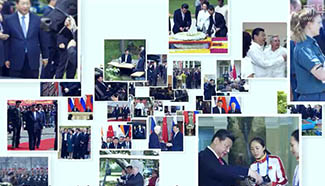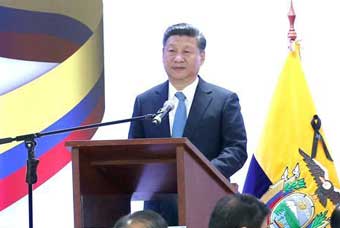MOSCOW, Dec. 30 (Xinhua) -- Russia wants to build mutually beneficial and long-term cooperation between its Far East and China, Minister for Development of the Russian Far East Alexander Galushka said.
"It is important for us that Chinese investors have appreciated the new opportunities of doing business in the Far East," Galushka told Xinhua in a recent interview.
He said that Chinese partners have been involved in 23 projects in territories of priority development and free ports in the region, with a total investment of 3 billion U.S. dollars.
The Russian government has approved a concept of developing international transport corridors "Primorye-1" and "Primorye-2" linking northeastern China's Heilongjiang and Jilin provinces to ports of the Primorye region in the south of the Far East.
The mutually beneficial corridors would open the gate for more large-scale projects, so as to dovetail the Russia-led Eurasian Economic Union with China's Belt and Road Initiative.
Galushka hoped that the alignment could become one of the drivers of global development in Eurasia and the world at large, with the Far East serving as a "springboard" in the process.
Commenting on the construction of a bridge across the Amur River (the Heilongjiang River) between Russia's Blagoveshchensk and China's Heihe, Galushka said that Russia considers infrastructure development a priority in bilateral cooperation.
"We need more bridges and crossings, we need to develop joint cross-border projects between the Far East and northeastern China," he said.
The minister said that Russia intended to attract more investment from China in 2017 and to promote the implementation of new projects of Chinese investors in the region.
"We want more people in China and Russia to become aware of how successful and well-developed the cooperation is between our countries in the Far East," said the minister.
The floating bridge across the Amur River was opened for transport on Nov. 18 between the two countries. The 600-meter bridge is built on six 1,000-ton barges connected end-to-end between Heihe Port in Heilongjiang Province and Blagoveshchensk, capital of the Amur region in the Russian Far East. The bridge is designed with a 10.5 meter-wide road with two-way lanes for personnel and cargo transport.
It is expected to remain open until April, when the river ice fully melts to allow for ferry operations, the official said.
Heihe is an important port in Heilongjiang, with Blagoveshchensk on the other side of the Heilong River. The distance between the ports' nearest points is only 100 meters.










